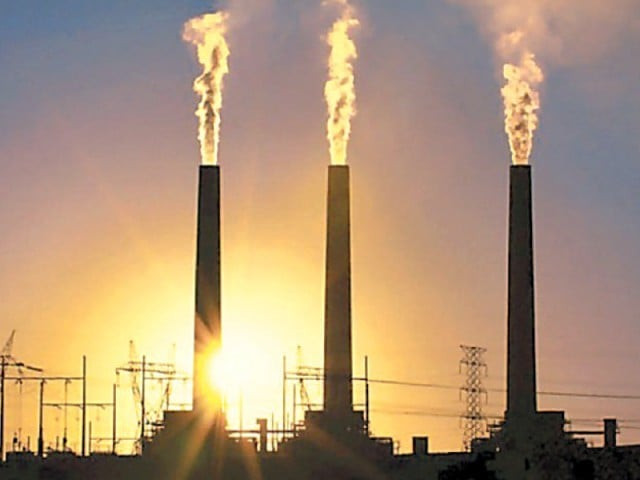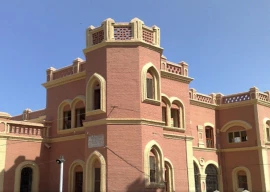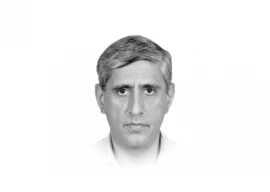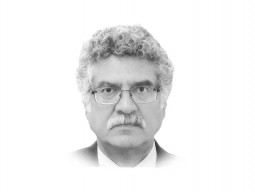
Last few weeks have been monumental for Pakistan’s energy landscape. The country has moved closer to unlocking millions of tons of lignite buried in its desert and land has been bought near the port to build facilities to store the fossil fuel and build power plants based on imported coal.
Also, executives have frequently travelled to China and elsewhere to meet lenders and consultants.
Want climate action? Give us cash, India tells rich nations
For as long as one can remember, Pakistan has used oil and gas to meet two-thirds of its electricity demand. Time and again, the country was left at the mercy of price fluctuations in international markets, especially as its own gas reserves depleted.
In 2013, after Nawaz Sharif’s Pakistan Muslim League (PML-N) came into power largely on the back of a promise to eliminate dilapidating power cuts, it became apparent that coal’s inclusion in country’s energy mix was imperative.
From almost nothing at the moment, Pakistan now aims to add 8,100 megawatts (MW) through coal to its system - as much as 40% of its existing generation capacity.
The obvious reason for using coal is energy economics. Electricity produced using coal is cheaper than both oil and gas. While use of alternatives, like wind, solar and hydel has also been encouraged, coal-based power plants remain most viable for investors and national grid, officials say.
Pakistan to argue its case at Paris summit
But Pakistan’s belated move comes when developed countries are vigorously moving away from coal. Pressure is also on large consumers like China and India to cut back on its use, as evident from ‘The Climate Summit’ in Paris.
This has not deterred Muhammad Ali Tabba, a director at Lucky Electric, which is building a coal-based 660 MW power plant.
“Pakistan will continue to remain a marginal player even after all the coal plants come up,” he said. “Statistics speak for themselves,” he says.
“Pakistan consumes around 4 million to 4.5 million tons of coal a year. In few years’ time this would increase to 26 million tons and not more. On the other hand, India is burning 500 to 600 million tons of coal and China uses over a billion tons.”
Paris human chain gives emotional jolt to climate summit
Obsolete coal plants in many developed countries, which have already run their course, are still being used, he said.
Without explicitly mentioning it, Islamabad has laid out such plant specifications and efficiency levels that only low-emission super critical plants would be built.
Out of the ten plants planned, nine depend on imported coal. Half of them are located near Karachi. One project - the Sindh Engro Coal Mining Company’s (SECMC) 660MW project - will be built near the coal mine in Tharparkar district.
These projects have Chinese backing in shape of loans from Chinese banks and equity participation from investors.
SECMC’s CEO Shamsuddin Shaikh said Pakistan’s carbon foot print was already too low to warrant any concern. “Our country does not have any other option. We have to go with coal.”
Protesters push leaders to avert climate catastrophe
About the push for alternates, he said thermal power still accounted for most of the global base load, which basically meant reliable supply of electricity.
“Wind, solar and even hydro power plants depend on seasons and conditions. They cannot be relied upon for uninterrupted supply.”
Industry officials say that five projects including Lucky’s 660MW, K-Electric’s 700MW, Hubco’s 1320MW, SECMC’s 660MW and another 1,320MW project of Sinohydro Resources and Al-Mirqab Capital are in advance stages of implementation.
“I have serious doubts if the other projects will materialise,” said an official, referring to the three coal-based power plants planned in Punjab.
These will use imported coal, which will be shipped to Port Qasim and transported upcountry via Pakistan Railways.
As climate impacts hit, Pakistan faces migration surge – experts
Activity is picking up near Karachi as K-Electric and Lucky have bought land at Port Qasim in recent weeks. Lucky intends to have financial close by April 2016 and SECMC’s funding will be secured by this year’s end.
Despite repeated attempts the Private Power and Infrastructure Board (PPIB) Managing Shah Jahan Mirza was not available for comments.
K-Electric’s coal project
While all the coal-based power projects have been made part of multi-billion dollar China Pakistan Economic Corridor (CPEC) initiative, one project has been left on its own - K-Electric’s $1 billion 700MW power project in Karachi.
“Apparently, the reason behind this is that K-Electric is a private company,” said a company official. “Our view is that we are doing the same thing of helping ease the power crisis. So there shouldn’t be any discrimination.”
All other coal power plants are linked with National Transmission and Dispatch Company (NTDC) system, which transmits electricity to every part of the country except for Karachi. “Isn’t that unfair? We are the only project for country’s largest city and government has not included us in its initiative.”
Being part of the CPEC helps give more credence to a project along with certain fiscal incentives.
Published in The Express Tribune, December 5th, 2015.
Like Business on Facebook, follow @TribuneBiz on Twitter to stay informed and join in the conversation.


















COMMENTS
Comments are moderated and generally will be posted if they are on-topic and not abusive.
For more information, please see our Comments FAQ